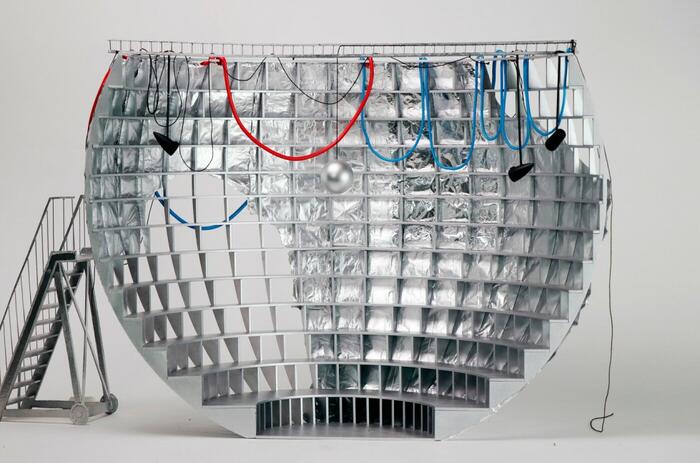BETWEEN LAYOUTS, COLORS AND VIBRATIONS – JUDITH LAUAND: CONCRETE DETOUR

"Judith Lauand/Walking into the future". In that way Profilograma Judith (2000), by Augusto de Campos, one of the main names of concrete poetry in Brazil, celebrates the art of Judith Lauand (1922-2022). The São Paulo artist, a female figure almost isolated in the country, was given a long retrospective with 124 works and extensive documentation, opened before her death at the end of last year, at São Paulo Museum of Art (MASP).
Concrete Detour is curated by Adriano Pedrosa (artistic director of the museum and curator of the next edition of the Venice Biennale in 2024) and Fernando Oliva, and attests to Lauand's poetic strength, with a marked pioneering that distanced her from the dogmatic –an attribute often linked with the movement in the country. Such positioning made her test beyond the geometric, wandering through pop art, with more political elements, and through a somewhat counter-cultural experimentation, among other strands present in her work. The anthology at MASP shows works from all phases and proves Lauand's visual and conceptual restlessness, quite active in more than seven decades of production.
The exhibition, then, does not shy away from showing relevant paintings from Lauand's early years, when she was still adept at the figurative. However, it is quite clear how much this figuration was already moving towards a formal severity, more connected to geometric volumes. Still Life (1952) is paradigmatic in this sense. "Trying to purify the traces, seeking only the essential, I made an abstract painting based on the forms of nature," said the artist. In the same initial section of the selection, there are interesting tapestry pieces signed by her, revealing little investigated links in the corpus of her work between craftsmanship and applied arts.
The set of paintings that can be affiliated with pop art also comes with Lauand's boldness in highlighting feminine and political issues. In paintings such as Woman Smoking (1969), Stop the War (1969), and Attention (1969), there emerges the emancipatory time spirit of May 68, of the daily fight against authoritarian regimes –not only in the macro spheres of power, on the contrary–, of the use of everyday language in more direct messages, also seen in the production of names such as Geraldo de Barros (1923-1998) and Ivan Serpa (1923-1973), among others. With messages and formalizations as or more potent as those already valued artists, Lauand, with the wave of profound revisions that the institutional arts system has been facing, seems to be finally receiving the spotlight. And Celso Fioravante's curatorial work in the solo shows at Berenice Arvani Gallery, in 2007, and at MAM-SP (Modern Art Museum of São Paulo), in 2011, should be praised.
Another blunt cut is the laboratory phase of materials used by Lauand in several works. Plaster, paper clips, thumbtacks, strips of fabric and straw, among other types of not very noble materials, became the source of production for various pieces, also developed especially in the 1960s. Notable among these is Acervo 197 (1968), a small chamber canvas measuring 50 cm x 50 cm.
And, obviously, the best-known paintings from the most prolific period of concretism are abundant and, connected to other phases less glimpsed through a magnifying glass, they generate an instigating path of versatility undertaken by Lauand. Attention is drawn to the tempera on chipboard and paintings in which the artist plays with lines, planes, and projection, resulting in a more open and graphic composition.
Parallel to the exhibition, two longer-term legacies stand out in Concrete Detour. One is the extensive catalog, with essays with multiple approaches to the artist's production. One of the happiest is signed by Eva-Marina Froitzheim, curator at the Kunstmuseum in Stuttgart (Germany), in which Lauand's participation in the anthological group show Konkrete Kunst, in 1960, organized by the legendary Max Bill (1908-1994) in Zurich (Switzerland), is analyzed in a larger context that has been the focus of more in-depth recent studies –the legacy of Bill and the Ulm School on Latin American constructive art.
"The early drawings are the touchstone of her concrete work. Through them, she acquires confidence in her formal repertoire, as well as a keen sense of the electrifying and harmonic mastery of the surface," Froitzheim writes. "From this foundation, she opened up over the decades to a more intuitive handling of form and color (...) and to an increasingly poetic mode of expression," the critic continues, outlining a reading that goes along with the perception of a less rigid and more sensitive constructivism in the global South.
The other inheritance, more long-term, is the donation of the artist's archives by her family. Notebooks, photographs, and numerous documentations, now in the custody of the museum in São Paulo, will enable new insights and reflections from primary material.
Judith Lauand: Concrete Detour.
Curatorship: Adriano Pedrosa and Fernando Oliva
Until April 2, 2023
MASP. Av. Paulista 1578 – Bela Vista, São Paulo, Brasil.











